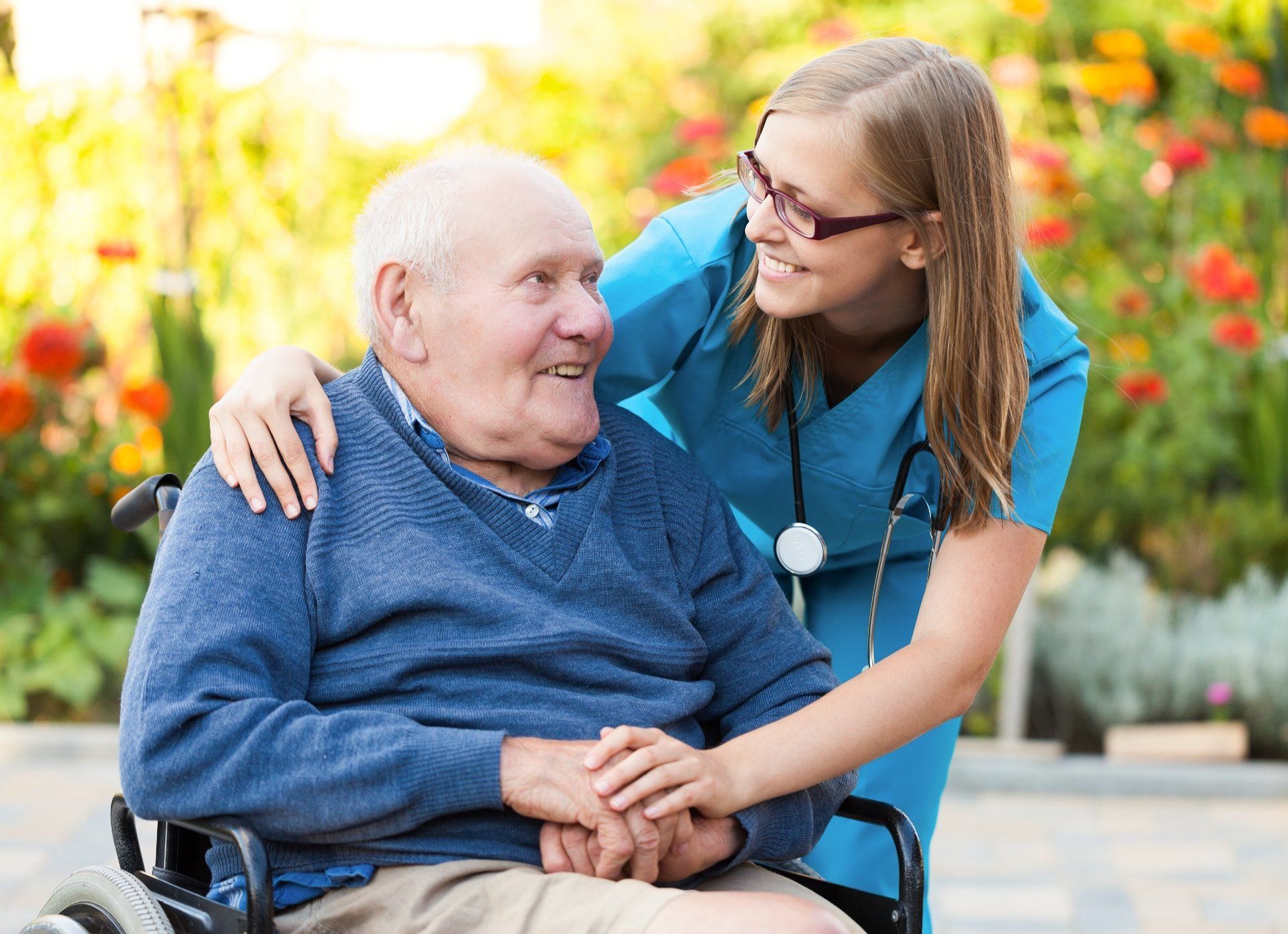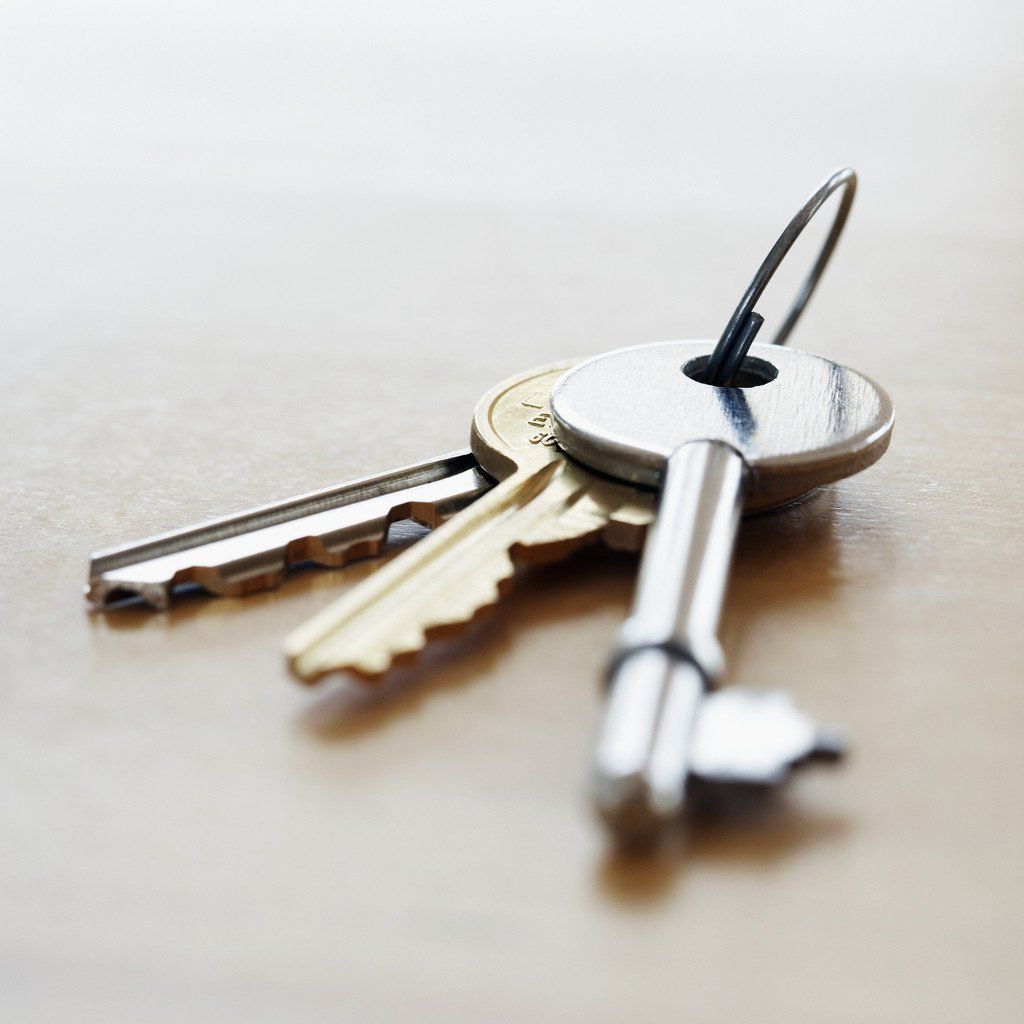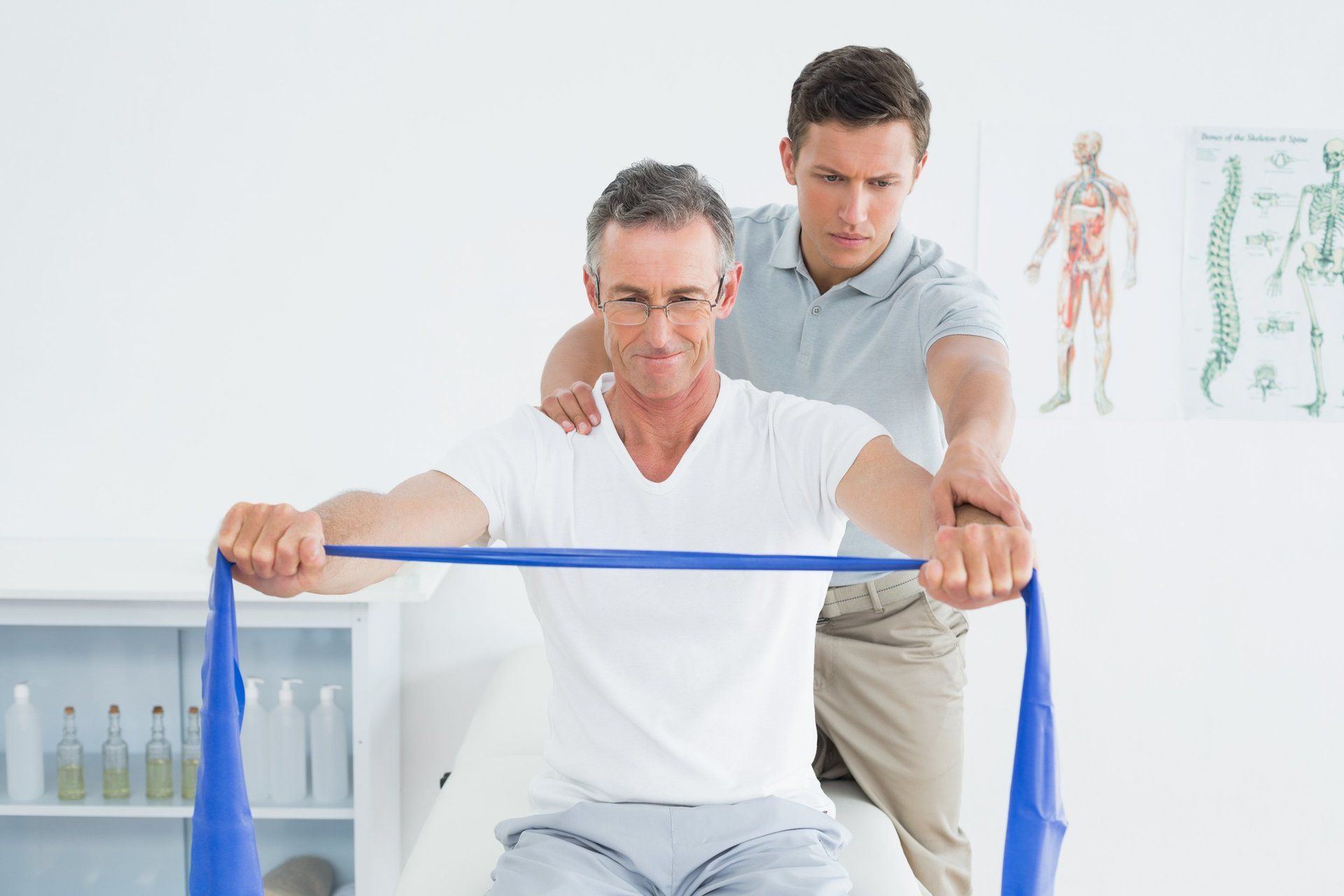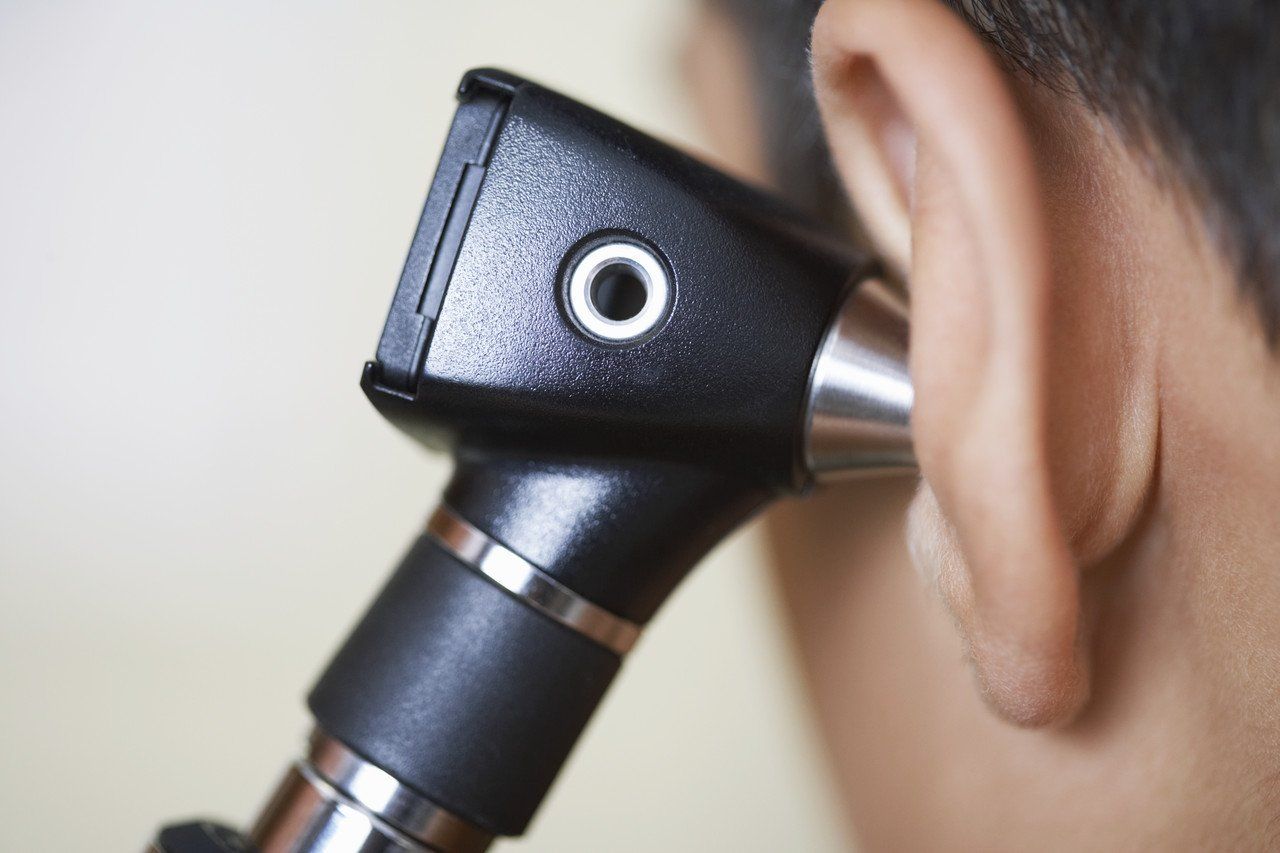Loving Care Senior Services, Inc. Blog

More than 5 million families in the United States are currently affected by Alzheimer's disease. The news of any illness in a loved one is stressful for families, but an Alzheimer's diagnosis can be especially debilitating. And while your mind is absolutely on your loved one and his or her battle with the disease, it's also normal to wonder how Alzheimer's affects families as well. Your family is about to go through a challenging journey, alongside your loved one. You probably have many questions about Alzheimer's, and your mind may feel like it's spinning. We know that this is an incredibly difficult time, and that there is a lot of unknown for your family. Although there's no way to prepare for anything and everything that can and will happen down the road, understanding some of the more common changes that are going to occur in your family can be helpful while you emotionally and physically prepare for what's next. Here are some of the ways Alzheimer's affects families While you know that there are many changes coming for your loved one on his or her journey, here are some of the ways that Alzheimer's will affect you and your family specifically: Relationship changes Whether you're a primary caregiver for your loved one, or whether you simply love and support your loved one, now as he or she begins a journey with Alzheimer's, it's important to know that as time goes on, your relationship with your loved one will change. As the disease progresses and it becomes harder to recall memories, names and faces, your relationship will evolve to meet the moments where they land. As you may be called upon to serve as more of a caregiver, it may also feel like your relationship with your loved one has morphed away from "loved one" and more toward that caregiver-type role. Emotional overwhelm As you absorb and adjust to these relationship changes, support is essential. Feeling completely overwhelmed emotionally is normal right now, and as time goes on. You're dealing with the news of a loved one's prognosis, the stress of determining care, providing care and your own emotions about everything. It's an awful lot! Talking to a therapist, doctor, loved one or friend, or clergy member can help you work through those changes and emotions. Conflict Unfortunately, an Alzheimer's diagnosis can affect families by leading to conflict. With emotions and stress running high, and everyone dealing with the news and decisions in their own ways, disagreements may arise regarding care, treatment and other issues. Family squabbles are often normal and harmless, but they can turn into real conflicts during stressful times. You may want to bring in a family friend or someone outside your immediate family to help make important decisions, ask questions and serve as an intermediary when necessary. During an already-stressful time, families should hopefully come together, not fracture apart. Strengthened bonds Conversely, sometimes Alzheimer's can affect families by bringing them closer. When everyone has a common goal, small squabbles and past incidents can be forgotten, and everyone works together. While no family welcomes an Alzheimer's diagnosis, sometimes good can come out of challenge. Not only can the challenging times following an Alzheimer's diagnosis strenghten your bonds with family and friends as your support circle tightens and works together, you may also feel strengthened bonds with your loved one. The stress, pain and fear in your loved one is unfathomable, even as you deal with your own grief and stress. Coming together, spending quality time and making every moment count can help you nurture a stronger relationship with your loved one than ever before. We are here to support your family after an Alzheimer's diagnosis. There are so many questions and decisions affecting your family after an Alzheimer's diagnosis. Having the right partner in your corner is essential. Here at Interim HealthCare, our team is comprised of experts in care for Alzheimer's and dementia. Our patient-centered approach to dementia care helps your loved one live comfortably and safely at home, with meaning and dignity, while providing your family with much-needed support and peace of mind.

By 2030, nearly 30 percent of all Americans will be 65 and older—and most of those individuals will want to continue living at home for as long as possible. However, many of today’s homes are not adequately built nor equipped to properly handle the needs of aging individuals. We all like to think of our homes as our safe havens, but the truth is that more than half of all accidents, including fatal ones, happen there. According to the National Institute on Aging, 6 out of 10 falls occur at home, and these are the leading cause of both fatal and nonfatal injuries to older adults. To put this even more into perspective: according to the CDC, every 11 seconds, an older adult is treated in the emergency room for a fall and, every 19 seconds, an older adult dies as result of a fall. The good news is that small, easy changes we can make at home can go a long way to lessen our chances of accidents, including falls and other maladies. Grace-Sonia Melanio, a program specialist with AARP California, says “Research shows that home modifications, even small ones like installing night-lights and lamp timers, can reduce the need for costly medical care, increase the ability of older adults to manage activities of daily living, and enhance their independence.” She offers these few simple tips to enhance home safety: Add a bench to your entry space to put on and remove shoes safely. Illuminate your address numbers or use glow in the dark or reflective stickers to make it easier for first responders (and pizza delivery) to find your home. To prevent falls, make sure that stairway and hallway lights have on and off switches at both ends of the hall, and at the top and bottom of the stairs. Jill Patterson, an occupational therapist for Institute on Aging’s Community Living Services, adds that the holidays are a time when the rate of accidents can surge as both objects and schedules shift. She points out that “Clear pathways may be compromised as furniture may be moved to accommodate a Christmas tree or other decorations. The use of extension cords may also create a fall risk if it crosses a pathway. Other factors include unsafe use of step ladders for putting up decorations, poor visibility due to holiday lighting, and fire risk from overly dried trees and use of candles. Furthermore, changes in routine may cause people to forget to take their medication, especially if they have family visiting or are visiting family.” Patterson recommends pathways should always be kept clear and clutter free. Either remove area or throw rugs, or secure them to the floor—but keep a non-slip mat near the entrance, especially during the rainy season. She also always recommends adequate lighting in all areas of a home, the use of night lights in the bathroom and along walkways, and to switch out wick-burning candles with battery operated LED ones.

Losing strength with age is natural. But left unmanaged, muscle loss in seniors can be quite debilitating, even threatening a loss of independence. Sarcopenia (loss of skeletal muscle mass) affects about one in ten adults over the age of 50, which further emphasizes the importance of maintaining muscle mass as an essential part of maintaining your health as you grow older. But why do seniors lose muscle mass exactly, and what are the best ways of dealing with it? Why Do Seniors Lose Muscle Mass? Understanding what happens to your muscles when you get older involves the complex biology of myostatin inhibition and various other complicated physiological areas. But there is a simple version: From about the time we turn age 30, adults begin losing roughly 3% of their strength annually for the remainder of their lives. An older person who leans into a sedentary lifestyle may find themselves facing several threats to their independence and possibly even their lives. That’s what makes learning how to make muscles strong in old age is an essential part of maintaining your health as you grow old. But what causes muscle atrophy in elderly patients? Aside from aging, there are a few risk factors worth knowing. For example, it’s not entirely clear why vitamin D deficiency can contribute to sarcopenia, but research has shown that correcting a deficiency can increase a person’s strength and reduce the risk of falls. Three of the most common things that accelerate muscle loss include: A sedentary lifestyle/period of inactivity: Muscle loss is common after prolonged periods of immobilization or bed rest. Prolonged inactivity can lead to loss of strength, increased fatigue from exertion, and greater difficulty breaking the sedentary activity. An unbalanced diet: Few things will reduce muscle mass as quickly as an imbalanced diet. Both low calorie and high-calorie diets are more common among seniors. Some research suggests older adults should aim for 25-30 grams of protein to maintain muscle, while others suggest 35g is the target for muscle growth in the elderly. Inflammation: For various physiobiological reasons, inflammation related to chronic disease can affect strength and conditioning. Patients with COPD, arthritis, tuberculosis, and conditions involving chronic inflammation are all more likely to suffer muscle mass loss. If you’re wondering under what conditions muscle wasting in the elderly could be reversed, you’re not alone. Unfortunately, there are no magic pills to solve these issues, and nearly all remedies are directly related to diet or exercise. DOWNLOAD A FREE SENIOR EXERCISING GUIDE How to Improve Muscle Strength in Old Age Muscle loss in elderly patients can be reversed in most circumstances, and many effective solutions are quite simple. One Japanese study found that seniors who spent six months walking managed to significantly increase muscle mass. Another study suggests people who walk fast are less likely to have sarcopenia. But how much exercise is a good idea for older adults? The NIH suggests half an hour of strength training for seniors, at least twice a week. Regular strength training has been shown to help maintain bone density, reduce the risk of falling, and reduce the risk of an injury if a fall occurs. The ACSM also suggests 30-minutes but adds that seniors should focus on one muscle group each day and warm-up and cool-down before/after exercise for as long as ten or twenty minutes. With respect to dietary improvements, the most common solutions will all involve protein. You can get quality protein from foods like lean chicken, salmon, Greek yogurt, skin milk, or cooked beans. Very commonly taken by weight trainers, an inexpensive, over-the-counter protein supplement called creatine has been shown to help people achieve more benefits from resistance training. Apart from proteins, Omega-3 fatty acids have also been shown to improve muscle growth and offer anti-inflammatory effects. Preventing Muscle Loss Among the Elderly As always, it’s important to talk with your care provider before making these kinds of lifestyle changes. But with a proactive effort and a little persistence, muscle loss in seniors can typically be mitigated, prevented, or recovered.

While we were all hoping the COVID-19 pandemic would be safely behind us before the holidays began, concerns about the coronavirus linger. It’s put a damper on private gatherings and public celebrations. Everything from community tree lighting ceremonies to family dinners is affected. Since seniors are at higher risk than younger people, it may be necessary to adapt how you and your loved ones celebrate this year. Fortunately, technology makes that easier to do, as does the wide availability of online shopping options. We’ve assembled some suggestions on how to enjoy the holidays with those dearest to you even if you can’t physically be together. Using Virtual Platforms to Connect Some families have already mastered the use of video chat platforms to stay connected to loved ones over the past 8 or 9 months. Zoom, for example, said daily users spiked from 10 million in December of 2019 to 200 million in March of 2020! The face-to-face nature of these services is the next best thing to being with friends and family in person. You can host virtual parties for everything from reading a Christmas story with your grandchildren to opening holiday gifts together. Depending on what you are interested in doing during your video conference, you can explore using one of these apps on your computer, smart phone or tablet: Zoom: With both free and paid versions, it’s easy to see why this app is so popular. The free version will allow 100 people to chat up to 40 minutes at a time. Paid versions begin at $14.99 a month and allow for unlimited meetings. Skype: Another popular and free video chat app, Skype allows for video and audio calling. It also lets you message back and forth, and share screens with other users. Houseparty: Billed as a face-to-face social network, this can be a great way to connect and play holiday games with loved ones near and far. There are a variety of games available on Houseparty, including Heads Up, Trivia, Chips and Guac, and more. Ordering Holiday Meals Online Holiday meals might be a little trickier if you are planning a virtual celebration. One idea might be to have everyone pick a dish to make or bake and arrange a safe place outside, such as a porch or patio, to meet and share them. Faraway loved ones might have to rely on shipping items overnight. Cookies and baked goods are easy to ship. You can even arrange for a shipping carrier to pick them up from your front porch. If you prefer to order your holiday meal instead this year, many local restaurants have curbside and no-contact delivery options. Here are a few nationwide sellers that are offering holiday meals delivered right to your door: Omaha Steaks: From a Turkey Feast to a Crab Cake Dinner and Bacon Wrapped Filet Mignon, this popular online store gives you a variety of options for entrees, wines, side dishes, and desserts. Harry & David: Another popular food delivery service is Harry & David. In addition to the gift baskets and towers for which they are known, you can order holiday meals. Pork Wellington, Smoked Turkey, and Gourmet Ham Dinner are just a few of the many choices. Chesapeake Bay: With holiday meal options ranging from Maryland Style Surf and Turf to Holiday Turkey Pie, you’ll find unique dinner menus here. You can also purchase appetizers, side dishes, and desserts. One word of advice is to order early. Many online sellers are anticipating a surge in orders as more people are avoiding restaurants this year. Holiday Gifts that Give Back Finally, if you are rethinking holiday shopping and gift giving this year, keep in mind that nonprofit organizations have suffered greatly amidst the COVID-19 pandemic. And it’s not just a downturn in financial contributions. Many rely on volunteers to perform vital tasks which helps keep payroll expenses down. For example, hospital volunteers help with everything from answering phones to transporting patients. You can help by making donations to a favorite charitable organization in loved ones’ names or by purchasing from a charity’s online store. Many nonprofits sell T-shirts, water bottles, tote bags, and other items to raise extra money for their mission.

The COVID-19 pandemic has caused many caregivers to consider, and potentially even pause on, plans to move their loved one into a senior living community. During the last nine months, many have felt the highs and lows of providing around the clock care and attention to their loved ones during an incredibly uncertain time. Now, we have hope again. A light at the end of the tunnel. The news of a COVID-19 vaccine is just what many of us have been awaiting. Sunrise is thrilled to be one of the very first to receive this vaccine and to make it available for our residents and team members. And, we now know that new residents who move into one of our communities will likely be eligible to receive the vaccine if the move-in occurs prior to our assigned clinic dates.* As families begin again to consider whether senior living is right for the beloved seniors in their lives, Sunrise has some additional information and resources available to help you weigh your options. Working closely with our partners at CVS Health, Sunrise is working to finalize COVID-19 vaccine clinic dates across all of our U.S. communities as part of our ongoing commitment to the health and safety of our residents and families. We expect these communities should have a vaccine clinic scheduled by the end of February, and be available to new and current residents and team members. While the physical health of our residents is a top priority, Sunrise is also focused on our seniors’ emotional and spiritual wellbeing. We’re providing community teams with programming guidance to make vaccination clinics a positive and peaceful experience with the use of aromatherapy, comfortable, socially distanced “waiting rooms,” comforting beverage carts and thoughtful preparation, monitoring and follow-up observations. We understand that many families have questions about the safety and efficacy of the vaccine, as well as potential side effects. On our website, you’ll find a number of educational resources from health organizations, including information from the CDC and other public health officials, to help your family make an informed decision about the vaccine. Sunrise is encouraging all residents and team members at its 275 U.S. communities to participate in the vaccine program, subject to and consistent with federal, state, and local public health laws and guidelines as they evolve. In fact, we are extremely pleased by our residents and families’ overwhelmingly positive reception for the vaccine, with a recent survey revealing that more than 92% of Sunrise’s resident and family respondents indicate they would definitely or probably receive the vaccine for their loved ones. This is a very positive step in striving to achieve expansive inoculation throughout each community. Be assured we have no plans to ease our enhanced infection control protocols. According to our Chief Clinical Officer Sue Coppola, “an effective vaccine will help reduce the risk of transmission, but we still need to remain vigilant and follow the evidence-based infection control measures that have helped keep our residents and team members safe throughout this pandemic. Mask wearing, social distancing, and other enhanced infection control protocols aren’t going anywhere any time soon, but we have every reason to be optimistic for the future.” We know there is much to consider in advance of a move to senior living. We encourage you to visit our web site to find a community near you and be connected with our team to learn more about our continued commitment to seniors in your area.

We are nearing the end of Medicare’s annual open enrollment period for 2021. Have you taken time to review your options? This 8-week period was established to allow Medicare recipients time to explore different health care options. Whether it’s sticking with traditional Medicare or signing up for a Medicare Advantage plan, the window for making changes closes on December 6th every year. Review Current Coverage While it’s great to have a variety of options to choose from, in most health care markets it’s common for seniors to feel overwhelmed during Medicare open enrollment. This can lead some seniors to stick with their current plan. What you should be aware of, however, is that plans change every year. For example, some health care providers may decide not to accept Medicare as a form of payment. At a minimum, seniors should take time to review any changes to their plan for 2021. By now you should have received an Annual Notice of Change (ANOC) in the mail. The ANOC is a required document that health plans must send to inform enrollees of any revisions to Medicare—including costs—from this year to the next. Make sure to carefully review it for any variation that might impact your coverage and how satisfied you will be in the upcoming year. Mastering Medicare Open Enrollment A health plan that worked well in the past, may not be the best plan anymore. You might have options available that will give you better coverage at a more reasonable price. That’s why it’s always a good idea to explore what is available in your local area. Here are a few tips to make it easier to get started and to make an informed choice: Consider your needs: Begin by reflecting on how well your plan worked for you this year. Are you able to see the physicians you want and need to visit? Have you found yourself with a pocket full of uncovered expenses, such as for prescriptions and medical supplies? Make a list of what you are happy with in your current Medicare plan and what areas could use improvement. Add up your costs: Pull out all of your explanation of benefit (EOB) forms and any health care expenditure receipts. Also, include expenses for any gap insurance or Medicare part B. Adding these to your total expenditures will give you the real cost of your current health care plan. Investigate your options: The Medicare Plan Finder makes it easy to investigate other options available to you. Just enter your zip code to search for plans in your area. Easy Path to Choosing a Medicare Plan is another resource you might find helpful. If you are struggling to navigate your way through the maze of Medicare options, there is help available at no cost to you. Finding Help with Medicare Open Enrollment The State Health Insurance Assistance Plan, known as SHIP, gives Medicare recipients access to advisors in every state. Should you prefer to ask questions to an expert in real time, a SHIP program advisor can help. They are experts in all things Medicare related from co-pays and out-of-pocket maximums to which providers are participating in 2021. One last piece of advice is to avoid delay, especially if you’d like help from a SHIP advisor. The closer it gets to the December 6th deadline, the busier these professionals are.

The votes have been counted and we are pleased to announce that our next online Book Club offering is….. The Round House by Louise Erdrich For week one of our Book Club, please read chapters 1- 4 by Tuesday, December 8th. Then come back to seniorplanet.org/articles/online-book-club/ and we’ll open a conversation in the comments so everyone can discuss what we read! We’ll meet over Zoom to discuss the full book the week of December 21st. More details to come! Here is how you can obtain a copy of The Round House: Borrow Online: Most libraries in the U.S. allow patrons to borrow e-books or audiobooks through online systems or applications you can download to your smartphone. OverDrive and Hoopla are two of the most popular services. The Round House is currently available on OverDrive HERE. If you are in New York State, you can apply for a library card online HERE. Order a Hard Copy: Contact your local bookstore to see if they are shipping books! We highly encourage you to support the independently owned bookstores in your area.

Whether you live with your grandchildren or are visiting via Zoom or other virtual meeting tools, there are many fun and engaging things that can be done with your grandchildren. These activities can be teaching experiences in many ways. Even the youngest grandchild will do well listening to your voice as you tell stories or read to them. To help get you started, here are some of my favorite activities to do with grandchildren, even if we are not in the same room: Board Games board game diceIt's a little tricky to play board games via a virtual meeting, but it is by no means impossible. Games like Monopoly are more challenging, but Candyland can work well. So do some math and reading games. It helps if both parties have a copy of the game if it's going to be virtual. In our home, one of our grandchildren lives with us. When we play, there will sometimes be treats out on the board for whoever lands on a particular spot. This can be done with about any game, but we first started the practice with Candyland. All of the candies get a small candy on them. Science kids science experimentFor virtual activities, an adult or older child (teens) should be present for the experiments, unless you are going to do it on your end for them to observe in regular sessions. There are a lot of fun things that can be studied. One example is how a raw (in the shell) egg reacts to different liquids. We've done soda, vinegar, and water so far. You can also make a colorful crystal garden. The recipe is available online, and you can color the crystals with food dye. This is about the only reason I ever buy bluing, as it's one of the ingredients. It takes a few days for the garden to be visibly growing, but it's a lot of fun to watch, even as an adult. Reading grandmother reading to twin grandchildrenInstilling a love for reading is something that is important for every child. If you can read well, you can learn anything. This can be done several ways. If you can be with your grandchild, it is a lot of fun to read to them while they sit on your lap. If you can't, you can read virtually or record yourself reading and mail it to your grandchild. If they can read, you can improve their skills by having them read to you. I have to warn you; some books will probably make you wrinkle your nose. One of our granddaughter's favorites is called That's Disgusting. It's something in her age group, and it is pretty disgusting, but it's still G-rated. Want more content about reading? Check out these blogs: Keeping Up with Your Reading in the Digital Age: Part 1 - Audiobooks Keeping Up with Your Reading in the Digital Age: Part 2 - E-Books Flashcards This one is easy-peasy to do virtually as well as in person. We like to practice multiplication flashcards and have done others in the past. Colors, letters, foreign languages, and other things can be done this way. If in-person, a small treat can be an incentive to continue, especially if the subject is challenging at first. Activities can be challenging to come up with when you cannot be in the same room. However, a little imagination and the use of technology can make things a lot easier.

According to the Hearing Health Foundation, “Nearly 25% of those aged 65-74, and half of those older than 75, have disabling hearing loss. Among adults ages 70 and older with hearing loss who could benefit from hearing aids, fewer than one in three (30%) has ever used them.” Your ears allow you to hear a range of sounds by transmitting sound energy into electrical signals that your brain interprets. Your ears also play a vital role in maintaining balance. Taking care of your ears protects your hearing health and can even help prevent hearing loss. With assisted living and memory care communities throughout Georgia, Oaks Senior Living understands the significance that ear and hearing health has on the overall wellness of older adults. We want to help you better understand the vital role that your ears play in your health and how to prevent hearing loss. How Hearing Loss Can Impact Your Life Hearing loss is more than an inconvenience; it can lead to other dangers and health concerns if not prevented or treated properly. Difficulty Connecting with Others Socialization and human connection are essential for maintaining mental and physical health. When an individual is experiencing hearing loss, large groups or settings with excessive background noise can make it difficult to hear or understand conversations happening around them. To counteract this frustration, individuals may refrain from participating or attending social opportunities. This type of self-isolation can negatively impact self-confidence and mental health. If you or someone you know is dealing with a hearing impairment, we encourage you to read our blog that shares tips to promote successful communication! Missing Important Information or Not Hearing Sounds Around You Imagine yourself in a doctor’s office. They tell you specific instructions on how to care for an existing medical condition, but you either mishear or do not understand what they are explaining to you. Instead of asking your doctor to repeat themselves (maybe out of embarrassment or self-reliance), you nod along and pretend you heard them. Now you’re in a situation where you don’t fully know how to handle your condition, which can lead to you doing something that could adversely affect your health. Picture another scenario: you are walking down the sidewalk. Traffic is passing you on the road, and construction sounds can be heard in the distance, but you do not hear the man on a bicycle telling you he is coming up behind you. You stop abruptly and turn into his path of travel. Taking proper care of your hearing health can help you to avoid both of these circumstances. By understanding your hearing ability and ear health, you are able to counteract the symptoms that come with hearing loss. Preventable Falls Because your ears are an essential part of your balance, taking care of your ear and hearing health can help to prevent unwanted falls. The Pacific Neuroscience Institute states, “the inner ear is composed of two parts: the cochlea for hearing and the vestibular system for balance.” When the inner ear vestibular system is affected, this can decrease your sense of balance and lead to falls that are otherwise preventable. How to Prevent Hearing Loss & Promote Ear Health Keep the Volume Down Prolonged exposure to loud noises can lead to hearing loss. Many experts suggest following the 60/60 rule – listening at 60% of the maximum volume for no more than 60 minutes a day. Wear Ear Protection When loud noises cannot be avoided, wear ear protection such as earplugs or (if necessary) noise-canceling headphones. This will dampen the noise and protect your ears from harmful exposure. Don’t Wait to See the Doctor If you suspect that you are experiencing hearing loss, do not wait to visit the doctor and get your hearing checked. Once damage is done to the ear, it cannot be reversed; however, further damage can be prevented. “Generally, people 60 and older should have a baseline hearing test and get rechecked every few years (healthyhearing.com).” At Oaks Senior Living, we provide person-centered care that promotes the overall health and wellness of the residents in our communities. For more information on the services we offer or our senior living communities in Georgia, we invite you to contact a member of the Oaks Senior Living team today.

With the holiday season upon us, it’s easy to indulge in comfort foods and relaxation! However, when planning for the holidays, it’s always important to keep in mind ways to stay healthy by being active and eating right, and also helping our seniors and other loved ones do the same. Food is a big part of the season’s joyful festivities. So, whether you are a caregiver for a senior loved one, or a senior yourself, you can find ways to eat healthy without cutting back on the celebration. Our team at Wesley Enhanced Living offers these 5 simple tips to help you enjoy the holidays with delicious food: Make sensible choices: Pick complex carbohydrates and natural sugars over simple carbs, processed foods, and foods high in sugar and sodium. Whole grains, vegetables, fruits, dry fruits, nuts, yogurt, low-fat cheeses, and lean proteins are good choices and there is no limit to how many scrumptious holiday meals and snacks you can make with these food groups. Practice mindful eating: Watching your favorite holiday classic on TV is a time for temptation—you want a snack to go along! Grab a bowl of almonds and cranberries instead of a tub of ice-cream. If chewing is a problem, consider a bowl of fruit such as blueberries, cherries, raspberries, grapes etc. You can eat these effortlessly and enjoy a healthy snack while watching a movie. At mealtimes, try to avoid distractions and focus on your food. This allows you to recognize when you feel full and you’ll be less likely to overeat. Enjoy your food: The holidays make you want to eat more because you don’t typically eat traditional holiday dishes throughout the year. Don’t deprive yourself completely but eat smaller portions and look for ways to make conventional rich and fatty foods with healthier ingredients. You may not want to give up mashed potatoes loaded with sour cream and bacon bits, but substitute that with mashed sweet potatoes, cashew cream and crushed walnuts. Tasty, festive, and actually, much more colorful! Watch the drinks: Sugary drinks, sodas, and alcohol can pack on the calories and are not ideal for your heart or other vital organs. Reach for a glass of water more often. When you want flavor, add some fresh fruit or a slice of lemon or lime to your water or sparkling water. By all means, enjoy that cup of hot chocolate by the fireplace, but use skimmed milk instead of cream and skip the marshmallows to sprinkle with cinnamon instead. Give your brain some time: After you have eaten a plate of food, give your brain at least 10 minutes to receive the signal from your stomach that it is full. Then decide whether you are still hungry and need a second serving. Celebrate the Joy of the Season with A Yummy Recipe – Cranberry Apple Pie Crisp Thanksgiving desserts are great, but let’s be honest, we don’t always have room for rich sweets after such a heavy meal. Here’s a healthy take on a traditional Thanksgiving dessert. This dessert is a variation on a fall classic and pulls out all the big players – warm spices, crisp apples, and the addition of tangy cranberries – a refreshing and healthy addition to this crisp. It’s much lighter than a pie, since there’s no crust, only a crumb mixture on top. Adjust the recipe as needed if you want to use a sugar substitute, following the directions for equivalencies. Ingredients: 5 cups thinly sliced, cored apples 1 cup fresh cranberries 3 tablespoons granulated sugar or equivalent sugar substitute 1 teaspoon apple pie spice, divided (you can use cinnamon or pumpkin pie spice if you prefer) ¾ cup quick cooking rolled oats 4 tablespoons packed brown sugar 2 tablespoons all-purpose flour (you can use almond or coconut flour to make it gluten-free) 3 tablespoons butter or butter substitute Directions: 1. Preheat oven to 375 degrees. In a 2-quart baking dish, combine apples and cranberries. In a small bowl, stir together granulated sugar and ½ teaspoon apple pie spice. Sprinkle over fruit mixture in baking dish; toss to coat. 2. In a medium bowl combine oats, brown sugar, flour, and other 1/2 teaspoon apple pie spice. Using a pastry blender, cut in butter until crumbly. If you don’t have a pastry blender, use fork or knife and cut butter into small pieces. This is best done when butter is very cold. 3. Sprinkle oat mixture evenly over fruit mixture. 4. Bake, uncovered, for 35 to 40 minutes or until apples are tender and cranberries have softened. 5. Serve warm with vanilla ice cream. Also works great the next day once cooled off, on top of vanilla Greek yogurt! Source: Eating Well Hallie L. Klocek MPH RD LDN Spread Some Holiday Cheer with Your Seniors and their Caregivers No one should have to spend the holidays feeling lonely or sad. We encourage you to share in the season by thanking others for their help and support this year. The team at Wesley Enhanced Living works hard each day to bring safe, clean, and comforting accommodations for your loved ones. We offer independent living, personal care, and rehabilitation, and skilled nursing options. Go ahead! Check us out. You will be pleased you did. Wesley Enhanced Living provides high-quality senior retirement communities for you or your loved ones. Contact one of our Philadelphia area locations and find out why our seniors love where they live. Our staff is happy to discuss your elder’s needs or your own and inform you of our range of services. Virtual tours are now available. Call us today for more information.



